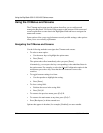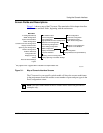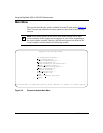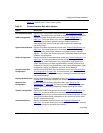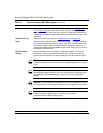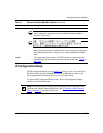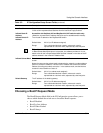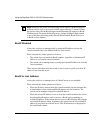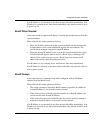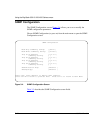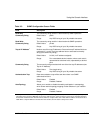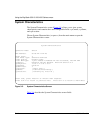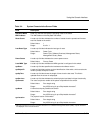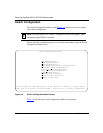
Using the BayStack 350 10/100/1000 Series Switch
3-10
309979-A Rev 00
BootP Disabled
Allows the switch to be managed only by using the IP address set from the
console terminal (this is the default mode for your switch).
When selected, this mode operates as follows:
• The switch does not broadcast BootP requests, regardless of whether an IP
address is set from the console terminal.
• The switch can be managed only by using the in-band IP address set from the
console terminal.
These actions take effect after the switch is reset or power cycled, even if an IP
address is not currently in use.
BootP or Last Address
Allows the switch to be managed even if a BootP server is not reachable.
When selected, this mode operates as follows:
• When the IP data is entered from the console terminal, the data becomes the
in-band address of the switch and BootP requests are not broadcast. The
switch can be managed using this in-band IP address.
• When the in-band IP address is not set from the console terminal, the switch
broadcasts BootP requests until it receives a BootP reply containing an
in-band IP address. If the switch does not receive a BootP reply that contains
an in-band IP address within 10 minutes, the switch uses the last in-band IP
address it received from a BootP server. This IP information is displayed in
the Last BootP column.
Note:
Whenever the switch is broadcasting BootP requests, the BootP process
will time out if a reply is not received within (approximately) 7 minutes. When
the process times out, the BootP request mode automatically changes to BootP
Disabled mode. To restart the BootP process, change the BootP request mode
to any of the three following modes: BootP When Needed, BootP Always, or
to BootP or Last Address.



